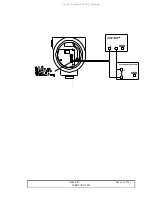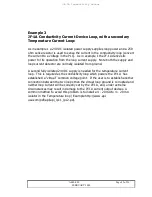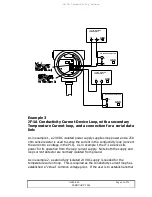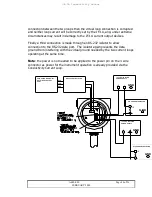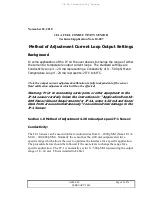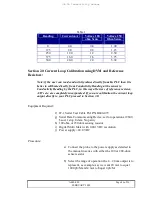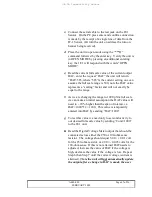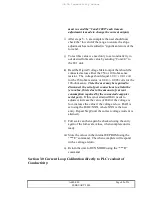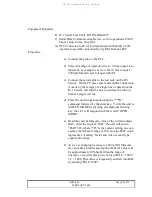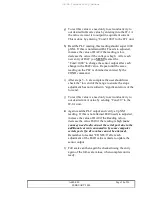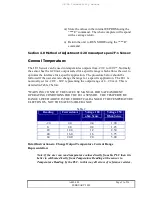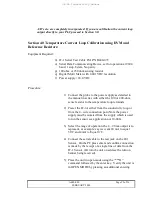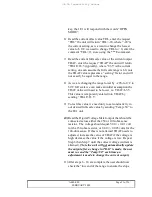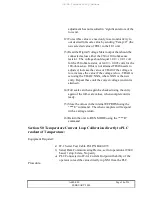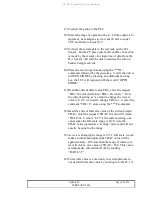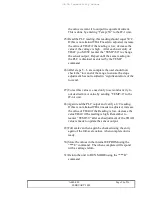
JF-1A Conductivity Sensor
A440-009
Page 55 of 56
FEBRUARY 2009
17)
Connect the probe to the PLC.
18)
Select the range of operation the 4 – 20 ma output is to
represent, as example; say we want 20 mA to equal
50˚C and 4 mA to Equal 0˚C.
19)
Connect the serial cable to the test jack on the JF-1
Sensor. On the PC press enter and confirm connection
is made by the receipt of a single line of data from the
JF-1 Sensor. (Or turn the unit on add see the turn on
banner being received).
20)
Place the unit in open mode using the “***O”
command followed by the enter key. Verify the unit is
in OPEN MODE by pressing an additional entering
key, the JF-1 will respond with the words “OPEN
MODE”.
21)
Read the current offset value TRL, enter the request
“TRL” the unit will return “TRL=-20, where “-20”is
the current setting, as we want to change the lowest
value to b 0˚C we need to change TRL to = 0, enter the
comment “TRL=0”, store using the ***E command.
22)
Read the current full scale value of the current output
TDAC, enter the request “TDAF” the unit will return
“TDAF=83.5, where “83.5”is the current setting, one
can assume the full scale range is 60˚C, note the
TDAF value represents a “scaling” factor and will not
exactly be equal to the range.
23)
As we are changing he range to 50˚ C full scale we can
make an initial assumption the TDAF value will be
approximately ~20% less than the range of interest, so
we will enter a new value of TDAF = 63.5, This value
is temporarily entered into DAF by sending
“DAF=63.5”.
24)
To test this value we need only to set temperature to
our desired full-scale value by entering into the JF-1A

